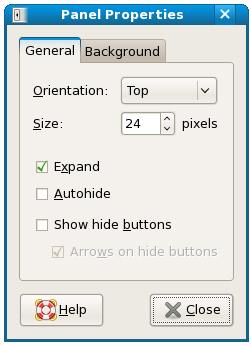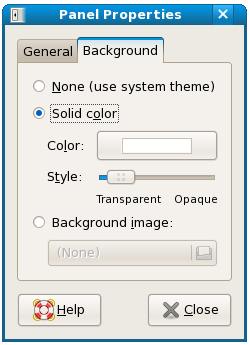Configuring the Fedora Desktop Panels
The Fedora Desktop Panels are probably the most useful aspect of the entire desktop, and as with just about every other aspect of the GNOME desktop, these panels are accompanied by extensive configuration options.
What are Desktop Panels
On a newly installed Fedora system there are two panels configured by default. These appear at the top and bottom of the desktop. The top panel contains the main desktop menus and a number of status areas with information such as the system date and time. The bottom panel contains the trash can, access to the various virtual workspaces and also has a button representing each application currently running in the current workspace.
The top panel:
The bottom panel:
These panels can be configured in a wide variety of ways including:
- Adding additional panels
- Moving the panels to new different locations
- Adding mini applications (such as stock ticker or weather applet)
- Size, background, visibility and transparency
In the remainder of this chapter we will look at each of these customization options in detail.
Changing the Position of a Panel
A panel can be placed in one of four different locations on the desktop: the top, bottom, far left or far right of the desktop. There are two ways to change the position of a Fedora GNOME Desktop panel. By far the easiest method is to simply click with the left hand mouse button on the panel you wish to relocate and grag it to the new location.
Alternatively, the location of the panel can be adjusted using the Properties dialog of the panel. This dialog is accessed by clicking with the right hand mouse button on any blank area of the panel and selecting Properties from the popup menu:
From the above dialog, change the Orientation setting to the desired value to position the panel as required.
Adding and Deleting Desktop Panels
New panels may be added to the desktop by right clicking on any existing panel and selecting New Panel from the resulting menu. The new panel will be place in an orientation where no panel currently exists. If you already have panels on all four sides of your desktop, the new panel will be placed next to a pre-existing panel. It is possible to fill your entire desktop with panels if you wish, though obviously this is not recommended.
An existing panel may be removed from the desktop by right clicking on the panel and selecting Delete This Panel from the popup menu.
Changing the Appearance of a Desktop Panel
A number of configuration options are available for changing the appearance of a desktop panel. These are all made using the panel properties dialog (accessed by right clicking on the panel to be changed and selecting Properties from the popup menu).
The Size property controls the height (when the panel is in a horizontal orientation) or width (when in vertical orientation). It is not possible to reduce the size to the extent where items will no long be visible (typically around 23 pixels).
A different color or even an image may be specified for the panel background. These settings are available from the Background page of the panel properties dialog:




